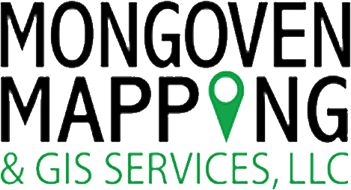AI Generated Content
Unlocking Potential with GIS Mapping: Beyond Just Greens and Fairways
Geographic Information Systems (GIS) are no longer confined to dusty maps and niche applications. Today, they’re revolutionizing diverse fields, and the world of golf, communities, property management, and beyond is reaping the benefits. Let’s explore how GIS mapping unlocks hidden potential across these sectors:
Golf Courses and Communities:
- Precision Course Management: Overlay irrigation systems, drainage layouts, and even soil composition onto course maps for targeted maintenance and resource optimization. Say goodbye to guesswork and hello to pristine greens!
- Enhanced Player Experience: Interactive maps guide players around the course, highlighting hazards, distances, and even hole-by-hole tips. Imagine navigating bunkers and birdies with a digital caddy in your pocket.
- Community Building: Showcase amenities, highlight walking trails, and map community events on interactive maps, fostering a sense of connection and engagement among residents.
Property and Community Association Managers:
- Streamlined Maintenance: Visualize property boundaries, track work orders, and schedule maintenance crews efficiently. No more missed repairs or wasted time navigating sprawling communities.
- Regulatory Compliance: Ensure zoning adherence by layering regulations onto property maps. No more late-night zoning code dives, just clear visualizations for informed decisions.
- Resident Engagement: Share interactive maps highlighting amenities, parking regulations, and even pet-friendly areas. Build a more informed and connected community.
Governmental Organizations:
- Urban Planning and Development: Analyze population density, traffic patterns, and green spaces to make data-driven decisions about infrastructure projects and resource allocation. No more city planning in the dark, just informed development for future generations.
- Emergency Response: Track fires, floods, and other emergencies in real-time, optimizing response and resource deployment. Every second counts when lives are at stake.
- Environmental Conservation: Monitor deforestation, track endangered species, and map protected areas effectively. GIS becomes a powerful tool for safeguarding our planet.
Horticultural Companies:
- Precision Landscaping: Analyze soil conditions, sun exposure, and water availability to design thriving landscapes tailored to specific locations. No more wilting flora, just flourishing gardens.
- Pest and Disease Management: Track outbreaks and map affected areas to target pest control efforts efficiently. Save precious greenery from pesky invaders.
- Sustainable Practices: Monitor water usage, identify invasive species, and optimize resource management for eco-friendly landscaping. Every green thumb can be a sustainable one.
The possibilities unlocked by GIS mapping are endless. From the manicured greens of a golf course to the bustling streets of a city, GIS brings data to life, empowering informed decisions and unlocking potential across diverse sectors.
So, whether you’re managing a community, planning a city, or nurturing a garden, consider adding GIS to your toolbox – it’s an investment in a greener, more efficient, and connected future.
GIS Mapping for Golf Courses and Communities, Property and Community Association Managers, Governmental Organisations and Horticultural Companies
Geographic Information Systems (GIS) are rapidly transforming the way property and community association managers work. GIS mapping software provides a visual and data-rich platform to manage and analyze information about properties, amenities, and residents. This technology offers numerous benefits for managing communities, from streamlining maintenance tasks to fostering resident engagement.
Enhanced Maintenance and Asset Management
GIS maps can be overlaid with layers of information such as property boundaries, utility lines, landscaping features, and even security cameras. This allows managers to easily locate assets, track maintenance schedules, and visualize potential issues. For instance, identifying areas with recurring water leaks or pest infestations becomes effortless.
Improved Communication and Resident Engagement
GIS maps can be shared with residents through online portals or mobile apps. This fosters transparency and empowers residents to stay informed about important events, amenities, and maintenance schedules. Interactive maps can also be used to gather feedback from residents on issues like park improvements or traffic flow.
Streamlined Regulatory Compliance
GIS maps can be used to comply with various regulations, such as zoning codes and building permits. By overlaying property lines with zoning regulations, managers can quickly identify potential violations and ensure compliance. Additionally, GIS data can be used to generate reports required by local authorities.
Data-Driven Decision Making
GIS analysis tools allow managers to extract valuable insights from their data. For example, analyzing crime patterns or resident demographics can help allocate security resources effectively or prioritize community development projects. By understanding spatial relationships within the community, managers can make informed decisions that benefit all residents.
Investing in GIS technology can significantly improve the efficiency and effectiveness of property and community association management. From streamlining maintenance tasks to fostering resident engagement, GIS maps offer a powerful tool for creating a thriving and well-managed community.
